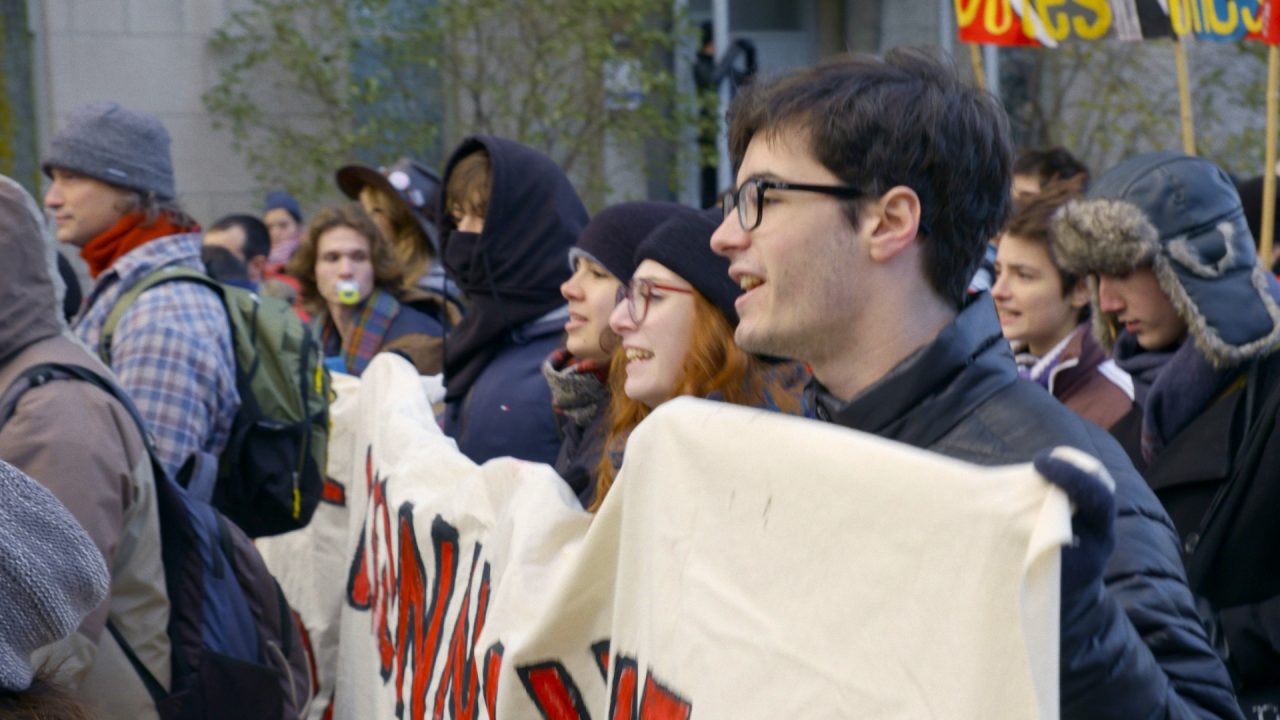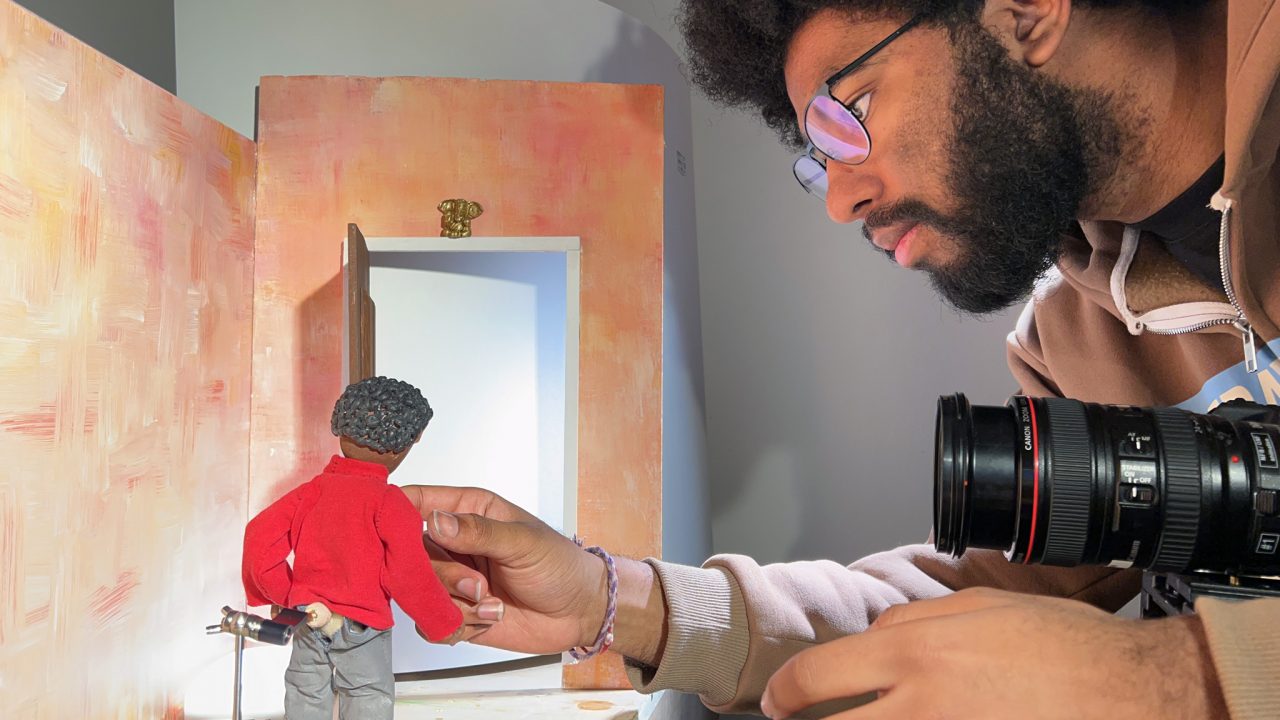How to create sound for a 1-minute animated short
The following is a guest post from Fred Casia.
The sound composition for my Hothouse 6 film, Marvin Parson’s Inner Wild Wilderness, has always been a huge component, but in my mind it was never one specific aesthetic or approach. My inspirations were definitive, but flexible in its application which I felt was important to communicate, to be able get the most out of the collaborative aspect of the sound composing.
Luigi Allemano was the composer, Geoffery Mitchell the sound recording and mix engineer, Karla Baumgardner the foley artist, and Juan Vialard the final sound mix engineer. It has been quite an extraordinary experience working with such talented professional individuals. It really helped me appreciate the artistry & craft of filmmaking that exists here at the NFB, in terms of both the people and the facilities, including a world class recording studio and mixing theater. The NFB upholds and adheres to the high standards that Canadians and non-Canadians come to expect from this institution.
The first step in creating sound for my short involved meeting with Luigi and discussing the inspirations for my film. The meeting was brief but effective, communication was clear and concise, and he seemed to understand what I was striving for.
Shortly after there was voice recording in which my characters were brought to life through a couple of former Hothousers and friends. Namely, James Braithwaite & Brandon Blommeart, as well as our tech support guru Brian Mitchell, who is also a band member of Black Feelings.
I had no script and they had only brief encounters with my film thus far, so the recording session was off-the-cuff and impromptu. I asked them to scream, grumble and speak gibberish, all in time to my film. It was such a treat to be able to hear them interpret the characters on screen.
I provided simple motivational direction for the characters, as I wanted them to interpret without bias what they felt would be the sounds for their assigned characters. By the end of that recording, which lasted maybe around 2 hours, I couldn’t have been more pleased with the results. The harder task would be to sort through the verbal gold that had spewed from their mouths.
The next recording session was the foley sound recording session with Karla Baumgardner. We started that day with a quick screening of all the Hothouse films so far, and then it was off to Studio 2 for the recording session. Karla performed walking, swishing, squashing, munching and many other sounds with the use of her tickle trunk of sound props, while Geoff hammered away at the control deck like a mad scientist. Luigi and I hung back and helped direct a bit, but Karla was so prepared that all I really needed to do was to sit back and applaud at the spectacular performance.
A few days later I received the soundtrack from Luigi. He composed it digitally but the plan was to use some digital sounds as well as live instrumentation. I proceeded with critiquing what I had received, but to be honest he seemed to hit the mark pretty much right away, and next thing I knew I was back in Studio 2, with 5 live musicians including Luigi himself!
The instrumentation for the score involved a cello, violin, clarinet, trumpet, trombone & French horn. I was so delighted to hear the music translated from a digital composition into an organic orchestral one. The musicians played, swapped instruments, adjusted to changes on the fly under the direction of Luigi, and performed spectacularly.
I remember Luigi telling the musicians at the beginning to “play the score with a serious tone, but as if a high school band was performing it”. Little directions like that I found really drove home to me that my collaborators truly understood what I was trying to achieve with this film.
Lastly, the final sound mix with Juan Vialard (or J.P.) in the Colin Lowe theater, a beautiful huge mixing theater at the NFB with a setup that supports multiple versions of surround sound mixing, in various theatrical standards. My mix started first thing in the morning and continued into the afternoon. Luigi had left a lot of audio bites as separate layers to allow us to play quite a bit with the sound. J.P. is a master with phasing audio in space.
We mixed in 5.1 surround sound, so he really took advantage of moving the sound around the theater enhancing the immersion that stereoscopic 3D brings. J.P. had so many fantastic ideas, placing and compiling the sounds into a meaningful and supportive sound composition, making sure that there was a comprehensible hierarchy between image and sound. Not an easy task with a 1 minute film that packs in a lot, but was easily achieved through the years of experience from everyone involved.
I can’t stress enough the level of mastery that seems to be integrated into the fabric of filmmaking here, the level of consideration and critique as well as the professional interaction. The collaborative effort is fantastic, and it is obvious from working alongside everyone involved. The sound aspect of the film making process was such a memorable experience for me. The process from conception to final product at the NFB takes so much into consideration, and sacrifices so little, it’s easy to see why the films here resonate so well.



